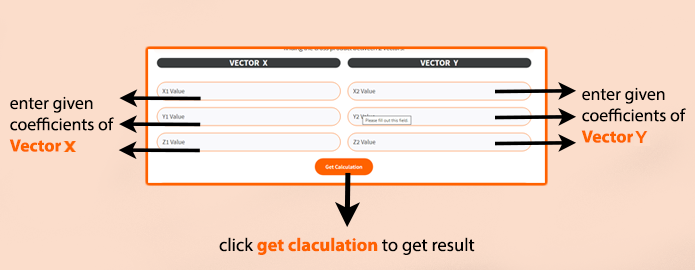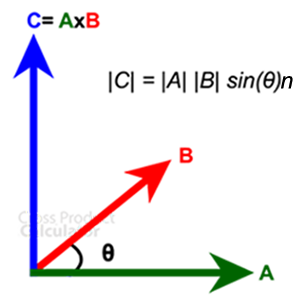Vector cross products are essentially used in physics and mathematical problems. And there are known formulae that solve vector equations. Vectors have both magnitude and direction, but their result is always a scalar quantity.
Now, while every sum can be solved using the formula, the question is, should you? Should you spend your time being productive and resourceful or physically solve each problem? If these problems are a means to an end, then they are better solved using the Cross Product calculator.
How to use Cross product Calculator?
The calculator is pretty simple to use, whether you need it for academic or personal use, you can simply key in the digits and press enter to find the solution.

Follow the steps below to find out the cross product :
Step 1: Enter the given coefficients of Vectors X and Y in the respective input boxes.
For example, if two vectors are given as ![]()
then you should enter 5, 6, 2 in the Vector X input boxes and 1,1,1 in the Vector Y input boxes.
Step 2: Click on the “Get Calculation” button to get the value of cross product between 2 vectors.
Step 3 : Finally, you will get the value of cross product between two vectors along with detailed step-by-step solution.






